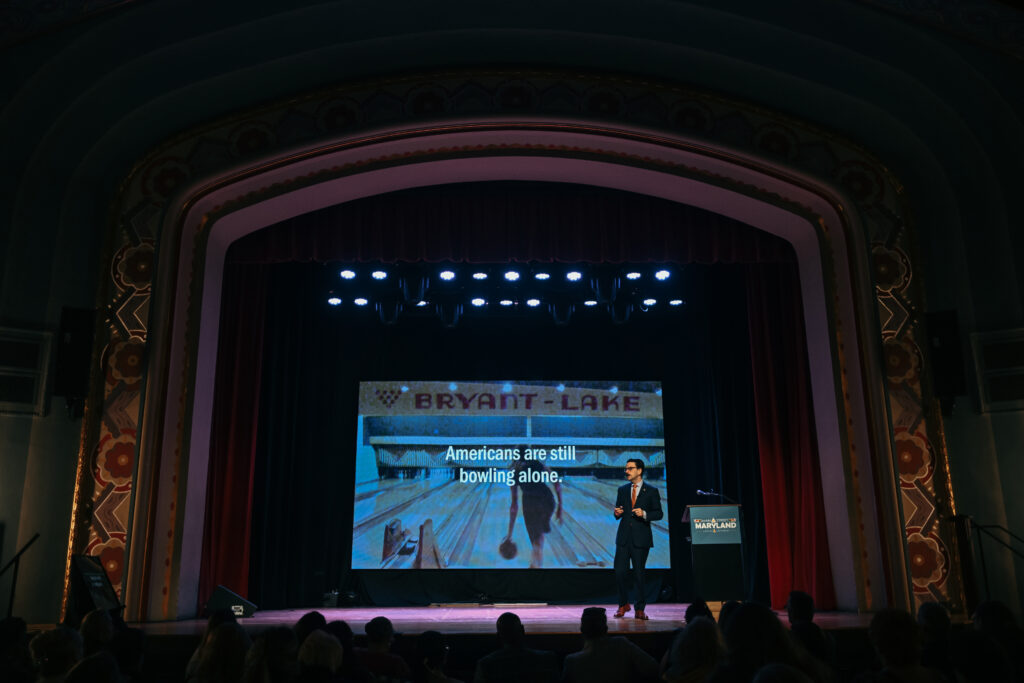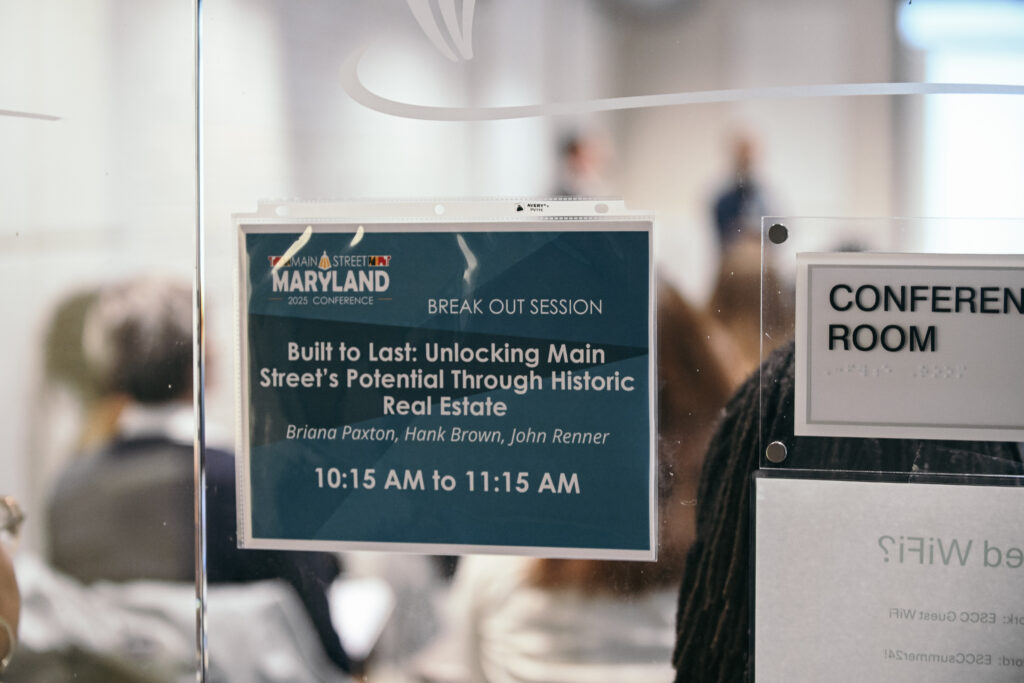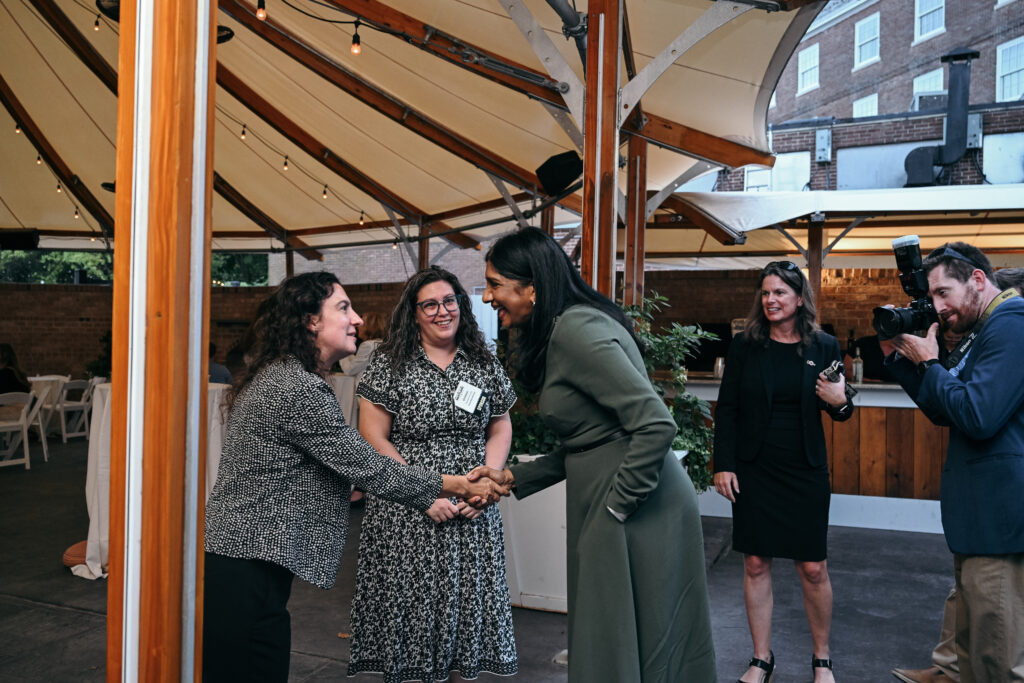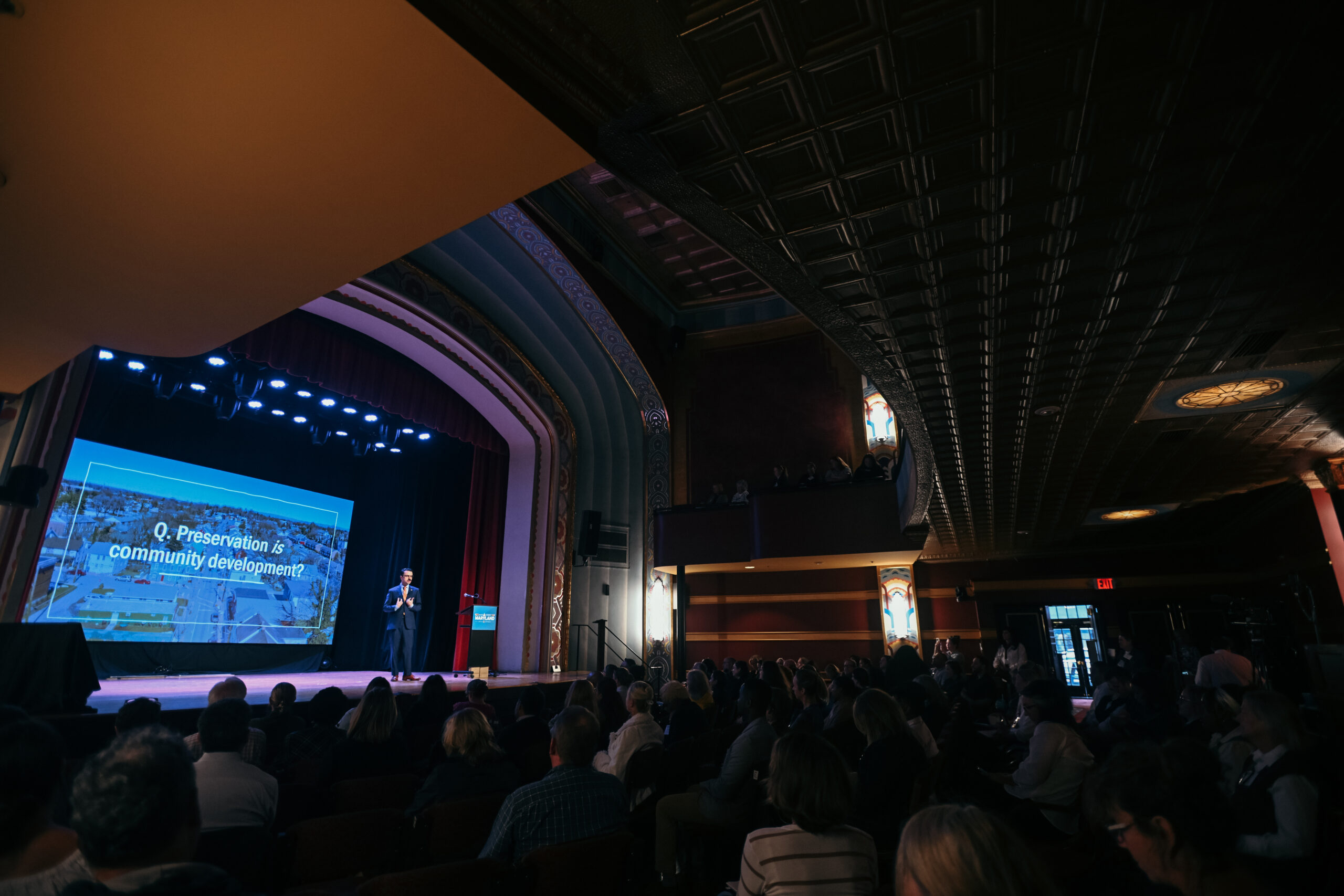Earlier this month, the Preservation Maryland team joined community leaders, planners, and advocates from across the state for the 2025 Main Street Maryland Conference in Easton, held under the theme “Powering People, Places, and Possibility.” The event brought together professionals working to strengthen Maryland’s historic downtowns and reinvigorate the Main Street movement through creative collaboration and local leadership.
Reframing Preservation: A Conversation About People and Possibility
Preservation Maryland President & CEO Nicholas Redding delivered a TED-style talk that challenged attendees to think differently about what preservation means today and the need to reposition preservation — not with a new logo or slogan, but with new ideas that solve real problems.
Preservation has always been about more than saving old buildings — it’s about sustaining communities. But to stay relevant in today’s world, preservation must once again evolve to meet modern challenges head-on.
When the modern preservation movement emerged in the 1960s, it responded to the devastation of urban renewal and highway construction with practical solutions: the National Register of Historic Places, federal standards for stewardship, and community-based preservation programs. The movement offered a new way forward — and it worked.
Today, our landscape looks different but no less challenging. Communities are polarized. Housing is increasingly unaffordable. Climate change threatens the very buildings we strive to protect. Many of our historic places risk becoming inaccessible or irrelevant if we cling to outdated approaches.

To meet this moment, preservation must once again become a movement of solutions, Redding contends:
- Open Main Streets for more than business. Let’s make them spaces for civic conversation and community connection.
- Push for more housing in historic districts. Simplify regulations, reduce parking minimums, and support infill construction that keeps communities livable.
- Update standards and incentives. Adapt rehabilitation guidelines and tax credit programs to reflect climate realities and practical maintenance needs.
- Advocate smarter policies. Encourage local leaders to make it possible to build the next generation of beloved places like Easton or Frederick.
This is not abandoning preservation’s roots — it’s fulfilling them. As Redding emphasized, when we keep a building, we’re not saving architecture; we’re sustaining community.
Preservation has always thrived when it offers answers to the challenges of its time. Just as we did in 1966, we can do it again — by reframing preservation as a force for resilience, relevance, and renewal in the 21st century.
Zoned Out: Understanding How Yesterday’s Policies Shape Today’s Challenges

Our Policy Analyst Briana Paxton presented “Zoned Out: How Yesterday’s Policies Shape Today’s Issues,” alongside Haley Lemieux from the Maryland Department of Housing and Community Development and Angelica Bailey Thupari from the Maryland Municipal League. The session explored how historic zoning and land use policies continue to influence modern inequities in housing, development, and access. Using a timeline that traced Maryland’s zoning history from the colonial era through the New Deal and Civil Rights eras, Paxton illustrated how policies designed decades ago have led to exclusionary land use patterns that persist today.
Her presentation emphasized that the built environment reflects our values—and that addressing housing challenges requires rethinking the legacy of redlining, single-family zoning, and outdated regulations.
Participants walked away with actionable strategies to increase housing production responsibly, such as:
- Allowing more diverse housing types in more places
- Streamlining permitting and review processes
- Reducing regulatory barriers and costs
- Supporting income-restricted housing, particularly for residents at or below 30% AMI
Together, these recommendations underscored that zoning reform and preservation share a common goal: building communities that are livable, equitable, and enduring.

Collaboration for Maryland’s Future
Throughout the conference, Preservation Maryland reinforced its commitment to working with partners like the Maryland Municipal League and the Department of Housing and Community Development to ensure that preservation remains an integral part of Maryland’s community development strategy.
As Redding and Paxton both highlighted in their respective sessions, the future of Main Street lies at the intersection of history and innovation, where preserving what makes a place special goes hand-in-hand with creating opportunities for everyone who calls it home.

